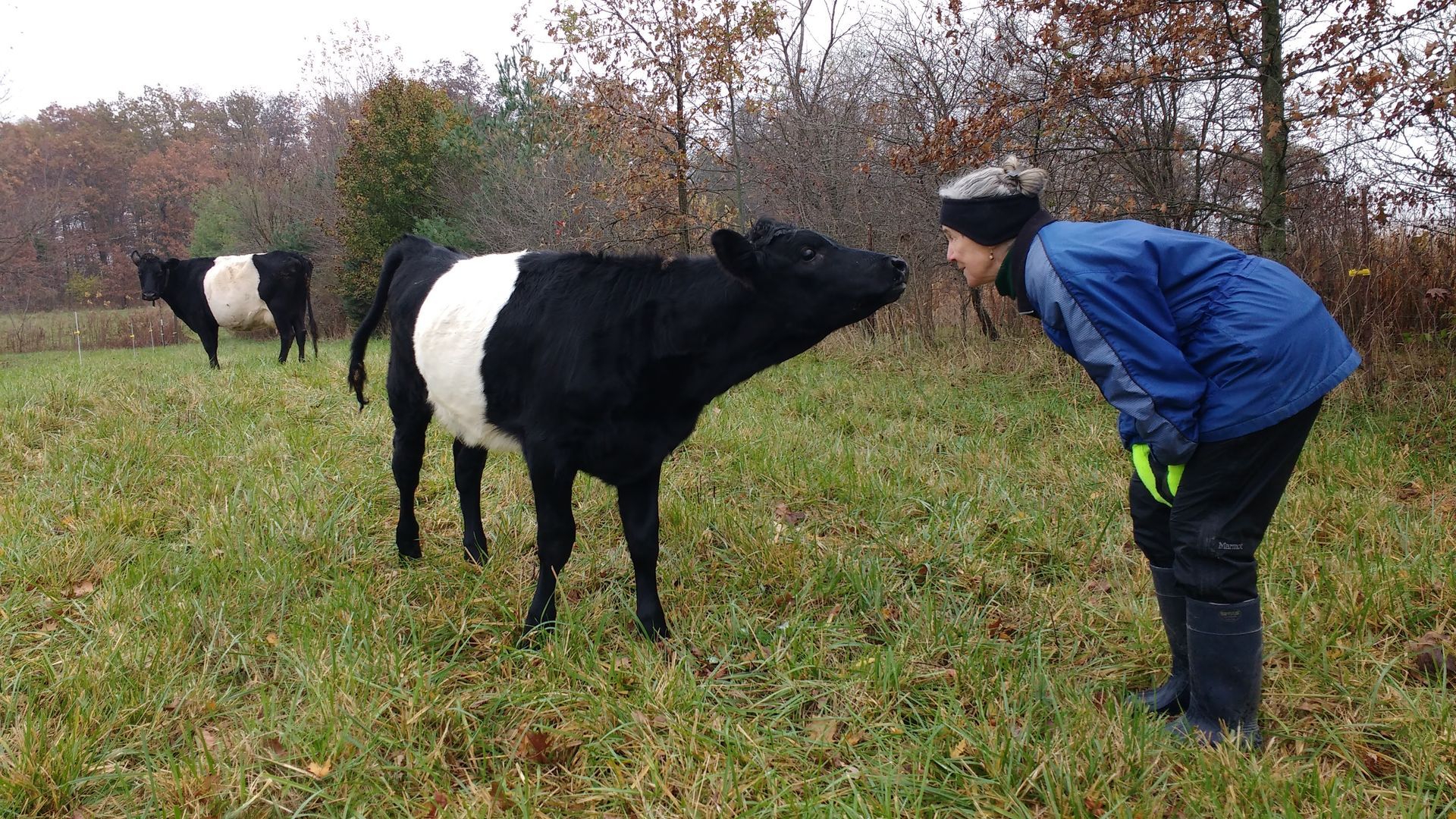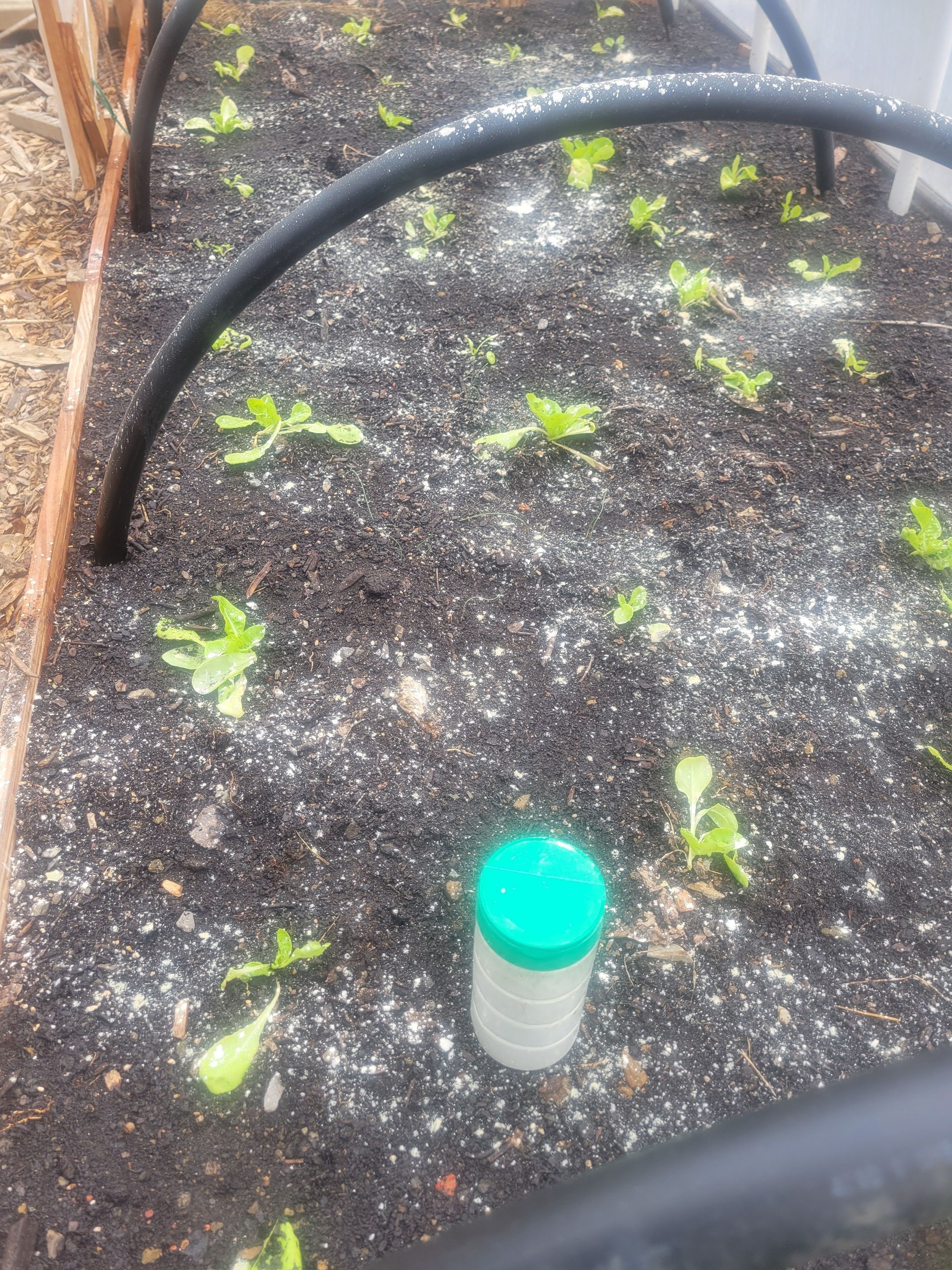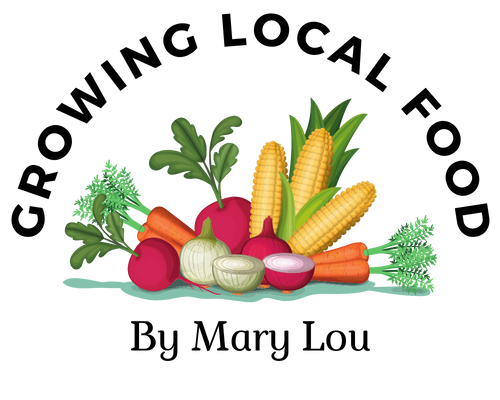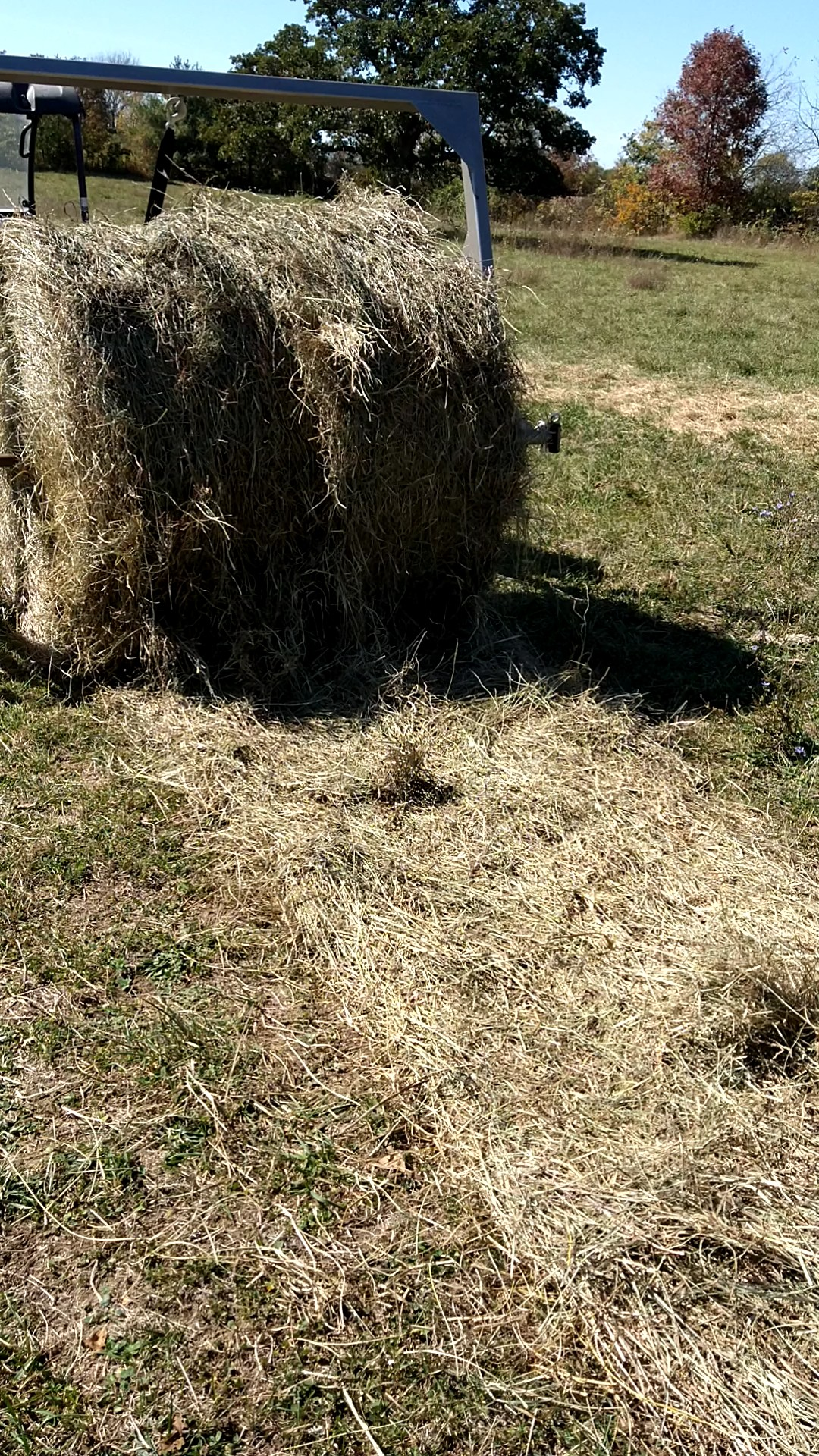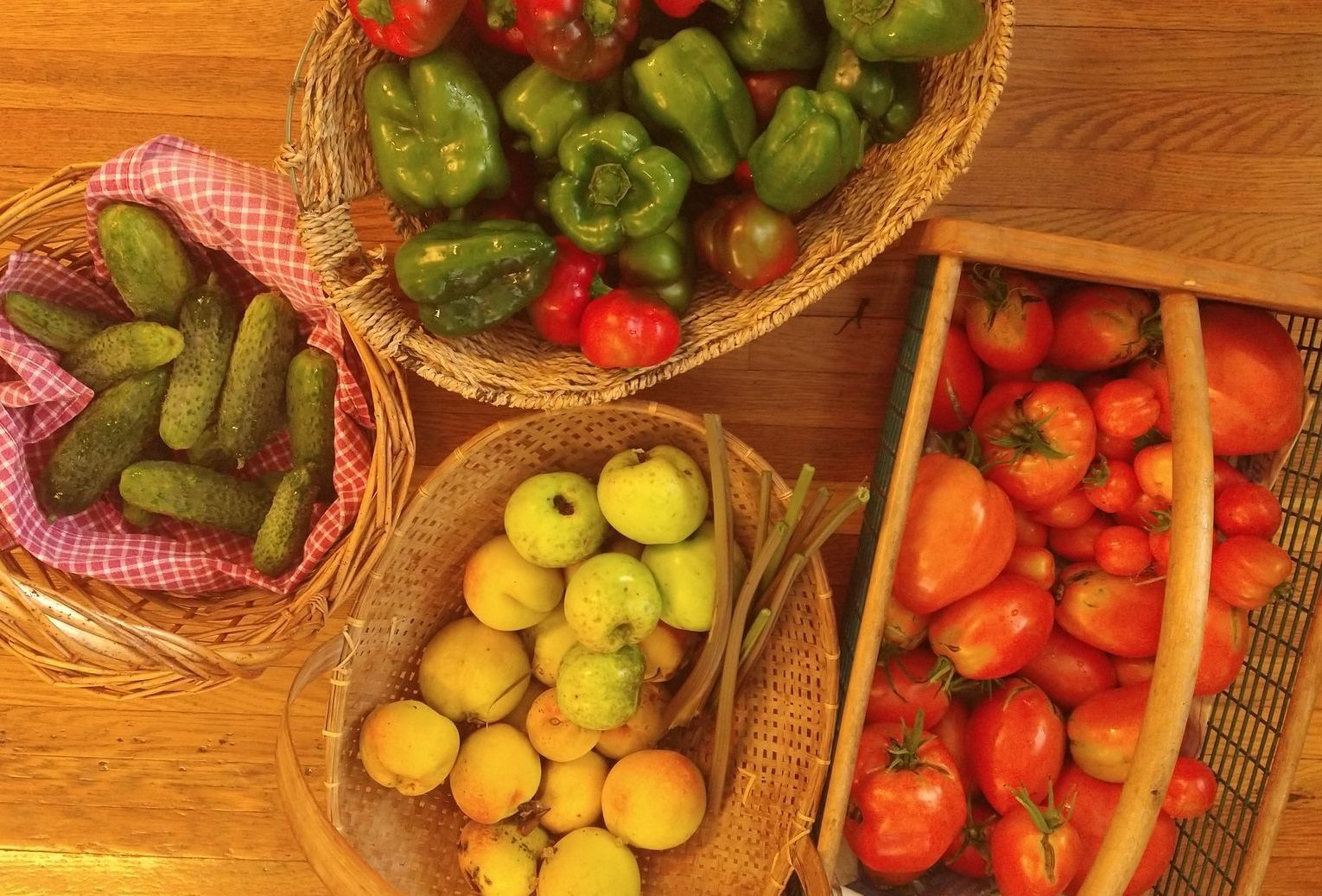How to Have Your Own Milk Cow and Why You Should Consider An Heirloom Breed
My experience with having cows is only with the rare Dutch Belted breed that is considered a milk rather than beef cow. Therefore, before discussing the basics of having your own cow of any breed, I will just mention why we found these cows to be a wonderful fit for a homestead.
Why we chose a heirloom breed of cows:
You'll notice that all the photos you see are of a "Oreo cookie cows," so I confess that in addition to these Dutch Belted cows being listed as "critically endangered" by The Livestock Conservancy, I chose them for their beauty. My husband and I had never even been around cows before we launched this new project, but we were delighted to learn that all heirloom breeds also have many other advantages to the corporate milk or beef cows. Here are some that proved important to our homestead:
- The old breeds of cows that survived had easy births, a trait which proves to be an economic and time-saving asset.
- Heirloom breeds are basically healthy and don't need the frequent veterinary interventions that modern cows rely on.
- These cows remember how to keep their heads to the ground and graze, a trait that "modern" cows have lost.
- Their compost and straw bedding provided the compost which was essential for the gardens.
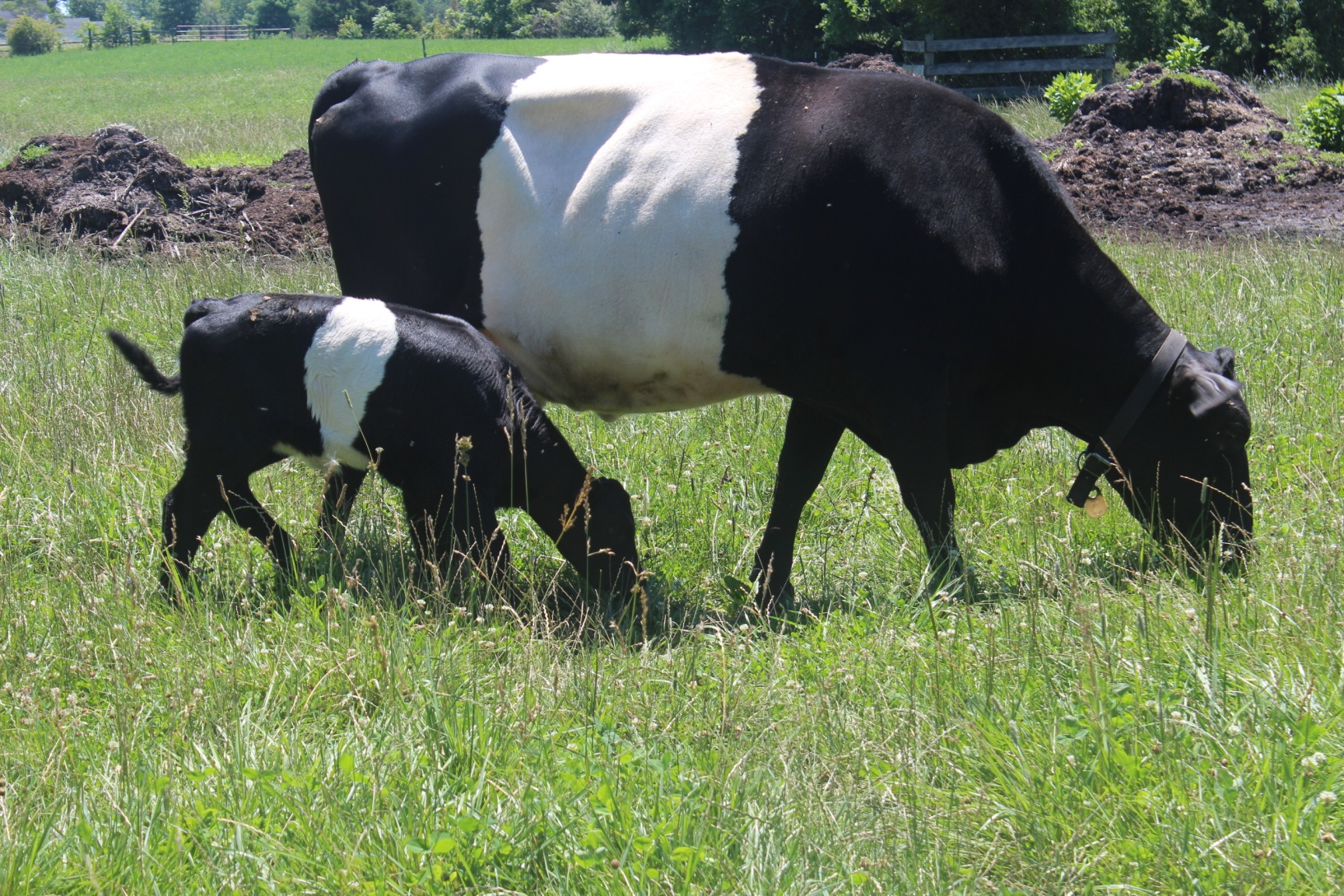
Benefits of having cows:
In addition to the above benefits that heritage breeds offer, cows in general enhance a homestead and your dinner table in many ways:
- I learned to love fresh, raw milk not only to drink, but from the cheeses and ice cream that are made from it.
- Beef from the cows that are grass-fed gives us affordable steaks which are highly nutritious and delicious.
- Manure may not sound like a benefit, but when it turns into beautiful compost that grows our vegetables, it's a huge asset.
- Cows are delightful to be around--trusting (when treated kindly), curious and mostly cooperative!
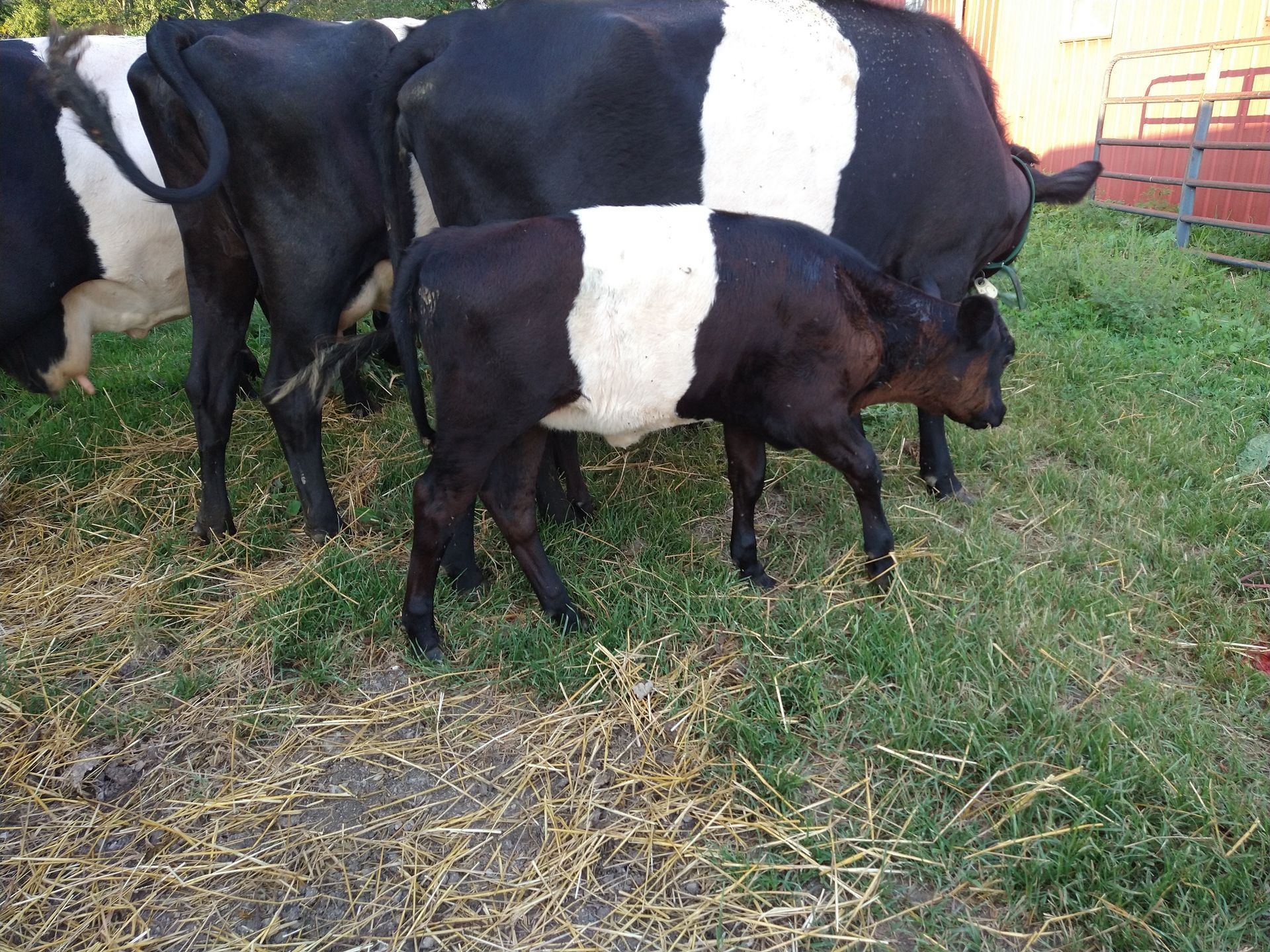
Good forage for healthy cows and nutritious produce:
Grazing without grains:
It's important to us that our cows eat well. We know that large dairies feed a lot of grain and our neighbors with cows did the same. It makes no sense to us that these old breed cows, or any animal with a rumen, eat grain and not grass. Good forage meant that we drilled forbs and clover into the meadow as well as into the hay field. Our reward was not only having the cows stay healthy, but it resulted in delicious and highly nutritious food for us.
Having a small tractor and buying equipment to bale hay (another steep learning curve!) was part of the process of making the farm sustainable. We next learned about rotational grazing and used electric wire to divide the pasture into sections and "rotated" the cows so that they didn't exhaust the forage.
Once we were baling our own small bales, we purchased a bale unroller that we could pull behind the Kubota when the pasture was dormant. How fun to have the cows kicking up their heels and chasing after us! This kept their poop and urine distributed in the meadow while their hoofs worked in all the organic material to enrich the soil.
Having cows means having milk:
Equipment:
We got our first two cows, Addie and Annie, when they were within two weeks of giving birth. Although we had worked to get the old barn ready, we had no experience with cows. We had found stanchions in the loft and made mangers for two of the stalIs. We had to guess what height to hang the stanchions and the cows were good sports about adjusting to our version of a milking stall.
We were happy to have access to their raw milk, but knew how important it was to keep everything as sanitized as possible so we wouldn't introduce "bad" bacteria into the milk. We therefore bought stainless steel milking buckets and two ten-liter stainless steel containers because they could be washed and then sanitized with an iodine solution. Filters were purchased for when we transferred the milk from the buckets into the larger, closed containers.
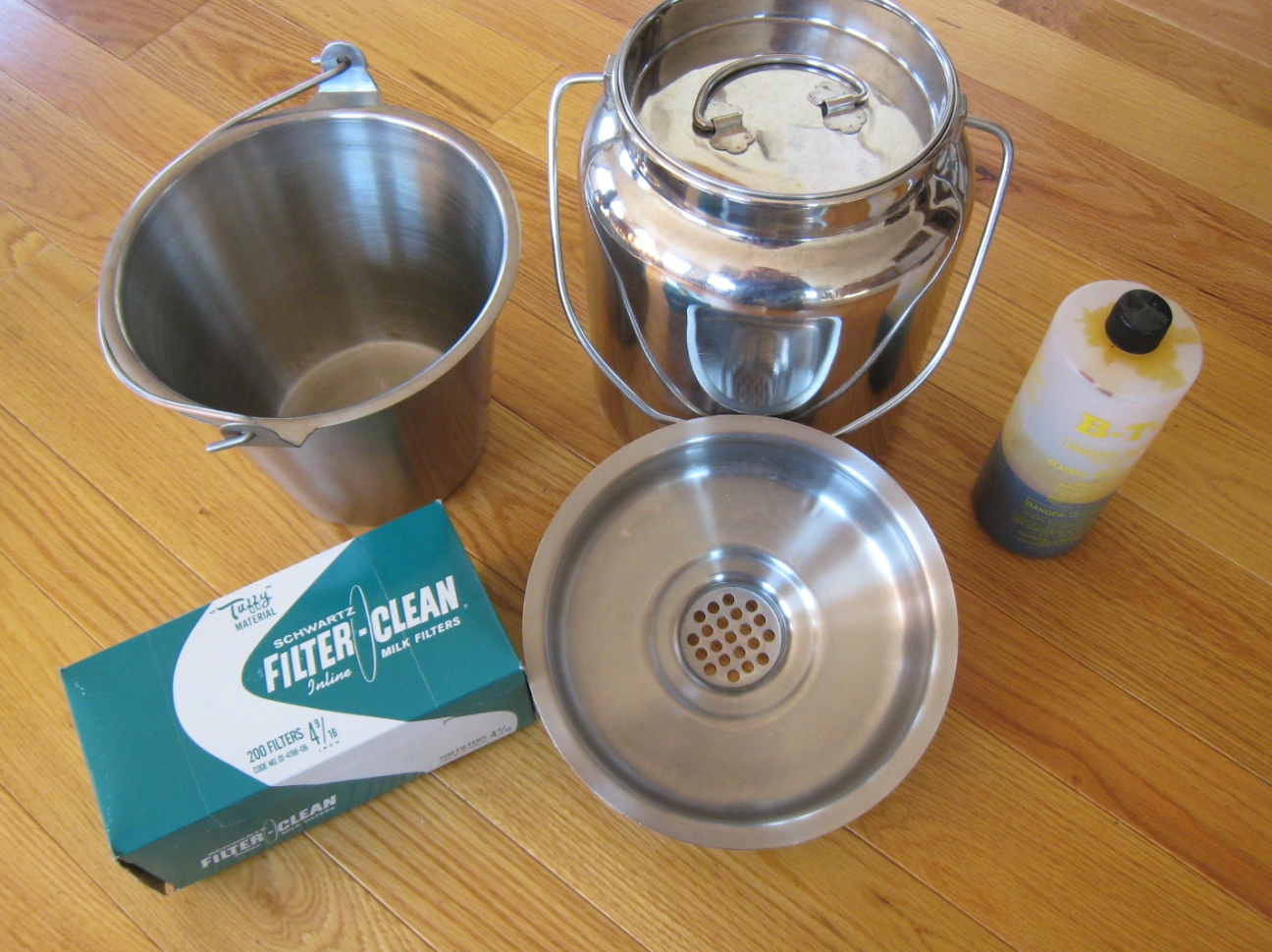
Skills:
We knew that the cows would need milking after giving birth,
but we had never even seen a cow be milked, and so had to learn quickly. I have a clear memory of sitting at the kitchen table with Joann S. Grohman’s book, Keeping a Family Cow, while my husband and I practiced the hand movements we would need to tease milk out of a teat. The cows hadn’t seen a stanchion before and we hadn’t seen a teat, so at least we were on equal footing while we worked things out!
Since that early beginning, we’ve been on a constant learning curve aided by books, neighbors, and seasoned members of the
Dutch Belted Association. Having experienced neighbors who help with each new challenge has been essential for us. It seems that the best learning is done when the situation requires it and I certainly appreciate the help we’ve received.
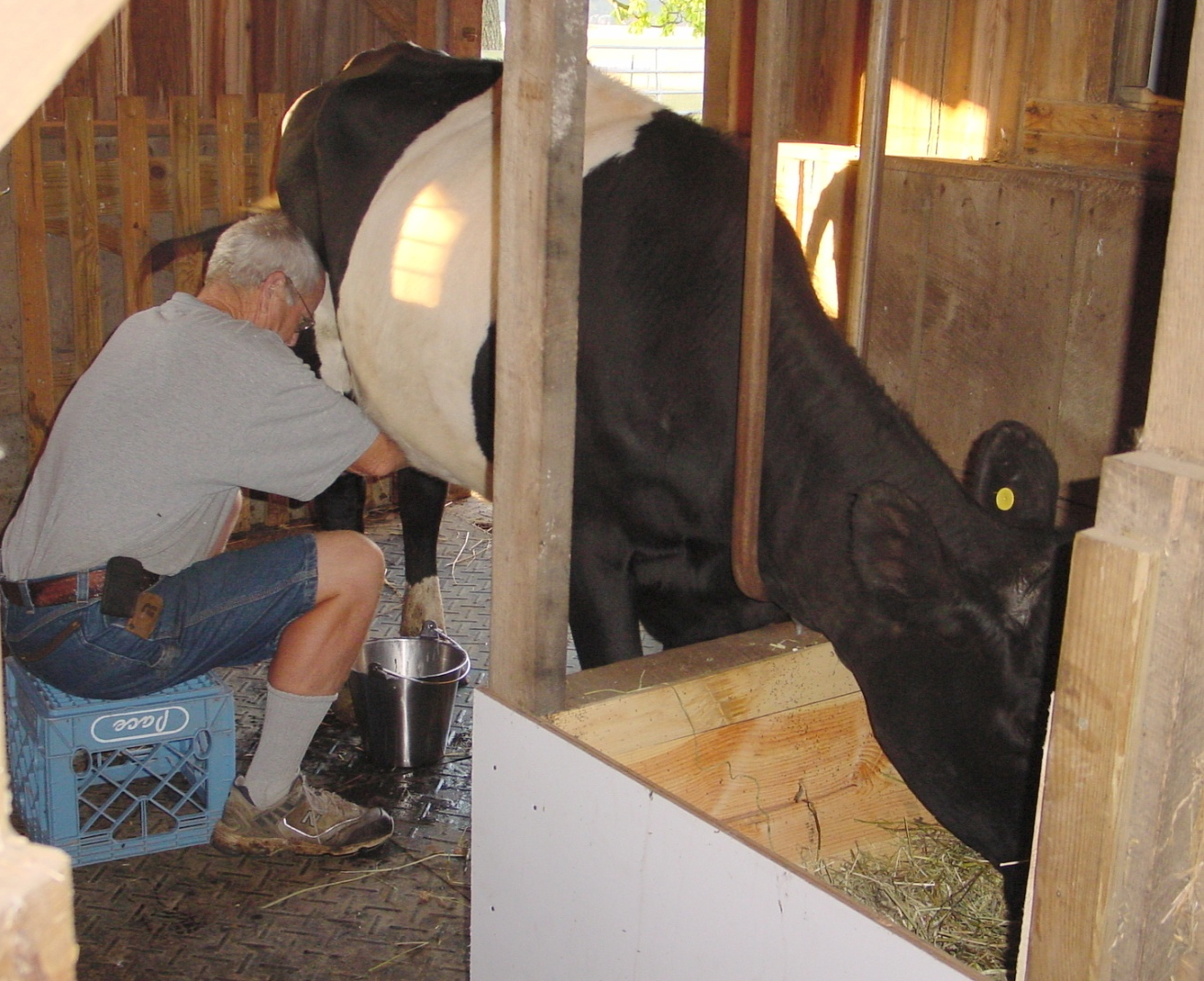
Our milking didn’t stay simple for long. The first two Dutch Belted cows are so rare that they are "bred up" from holstein cows. Our first cows were still 25% holsteins and between the two of them, gave us ten gallons of milk a day with twice-a-day milking. That’s a lot of milk for the two of us. So, we drank a lot of milk and enjoyed the obligation of eating ice cream. The chickens and pigs drank a lot of milk, and we ate a lot of cheese. I studied Ricki Carroll’s, Home Cheese Making book and we ate mozzarella, yogurt and even made and stored cheddar cheese for winter. I enjoyed the ease of making “clabbered cheese,” which only needs to sit in its sanitized, stainless steel, ten liter container in the warmth of the sun to separate into curds and whey. Clabbered cheese has a "tang" that goes well with a bit of honey from the beehives. The first few months after birth while the calves were small, we had a whole lot of milk!
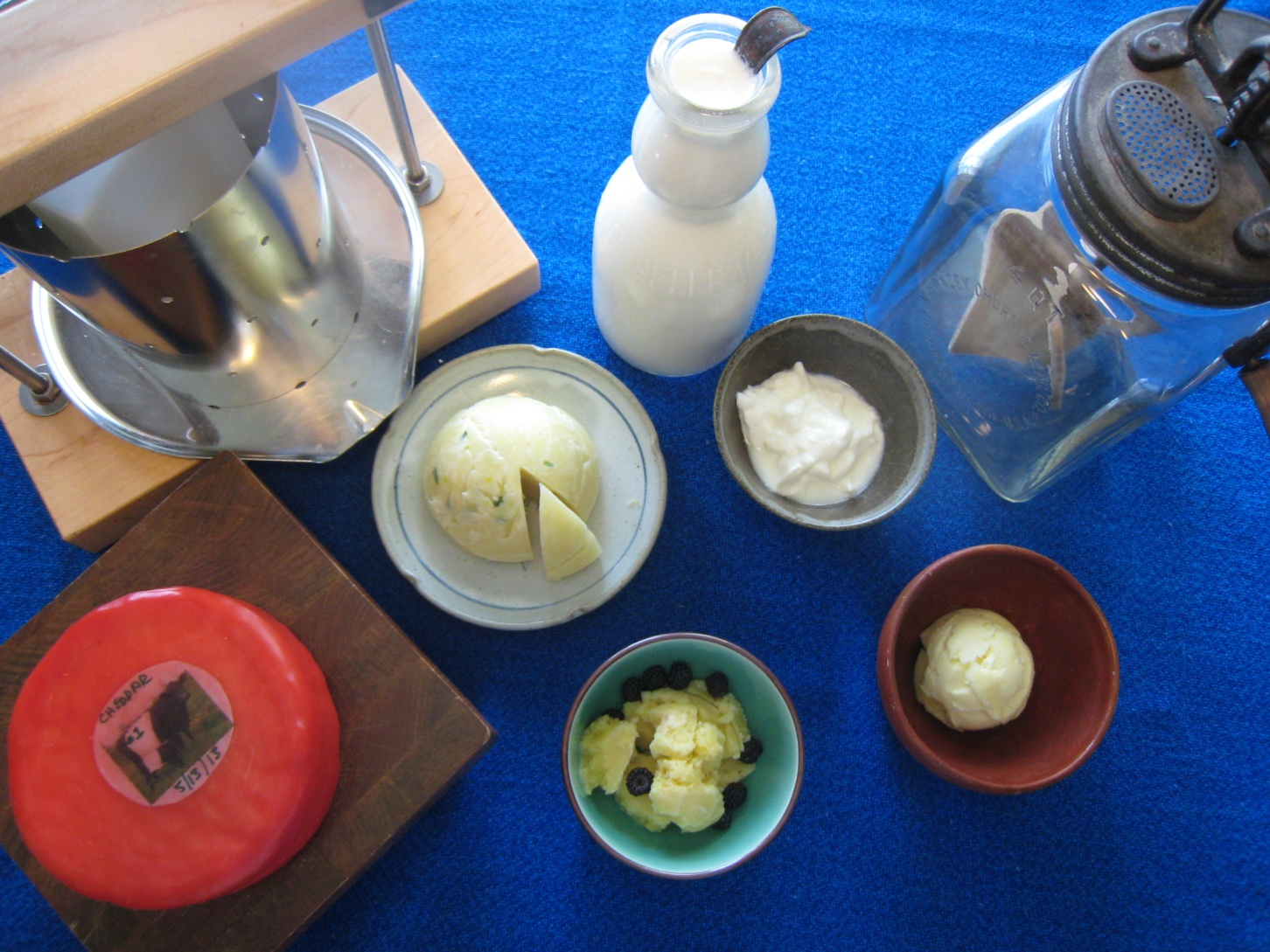
Artificial Insemination:
AI:
While the rest of the world was learning about "artificial intelligence," we were learning about "artificial insemination," or "AI." Because the Dutch Belted cows are remain so rare, we needed to use AI instead of a bull to get them pregnant. Keeping pure Dutch Belted semen is part of our commitment to protecting this rare breed.
Our neighbor lets us keep the semen in his liquid nitrogen tank and we share a skilled person to do the insemination. We built a "head-gate" in the barn's lean-to where a cow can be bred. A cow should have two months of being “dry” before she gets pregnant again. For us, that means our kitchen calendar looks like we have a full social life; but actually it’s full of the dates of when each cow should come into heat. “Heat” may present as a lot of mooing and the cow “standing” while another jumps on her. Other times, especially when the weather is hot, it’s difficult to even see that much action. We’ve been using scratch-off heat detectors to help us know when a cow has been jumped on by another.
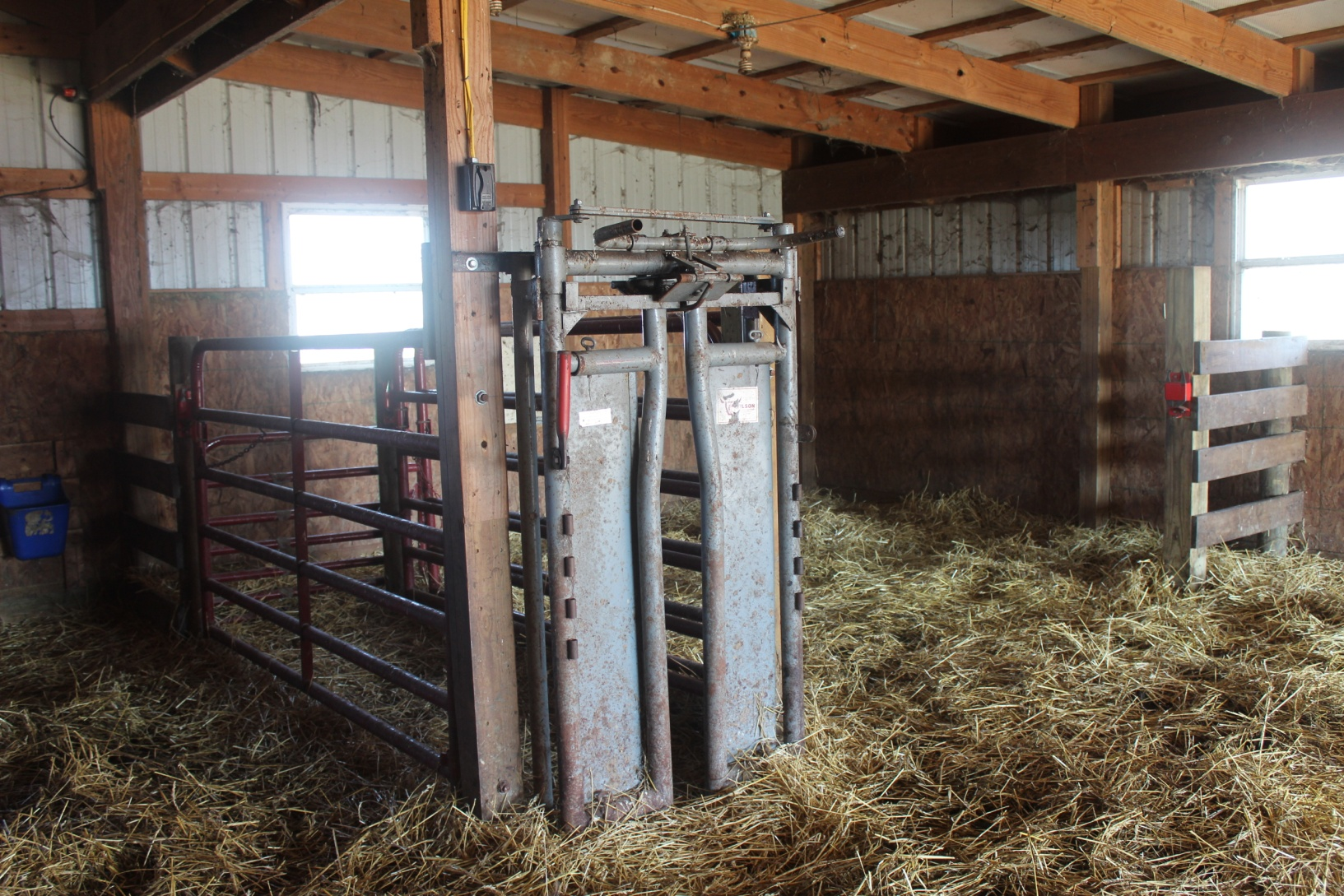
Birthing:
Nine months after successful insemination comes the birth. Such a large mammal to share the same gestation time as a human! Some people with cows are pretty relaxed about the births and let the cows stay out in the pasture with the herd. I’m just not the laid-back type, and so my husband and I alternate two hour checks during the nights when a cow looks ready to calf. Having an old breed means they usually have easy births, but we did learn to call the vet if the bag of water breaks and the calf doesn't appear within the next 15 minutes or so. What’s helped me the most is finally getting brave enough to put my hand up the birth canal to determine the position of the calf. If I can feel a nose and a couple of hoofs turned upright, everything should be fine. The majority of time, we are grateful for these cows’ easy births.
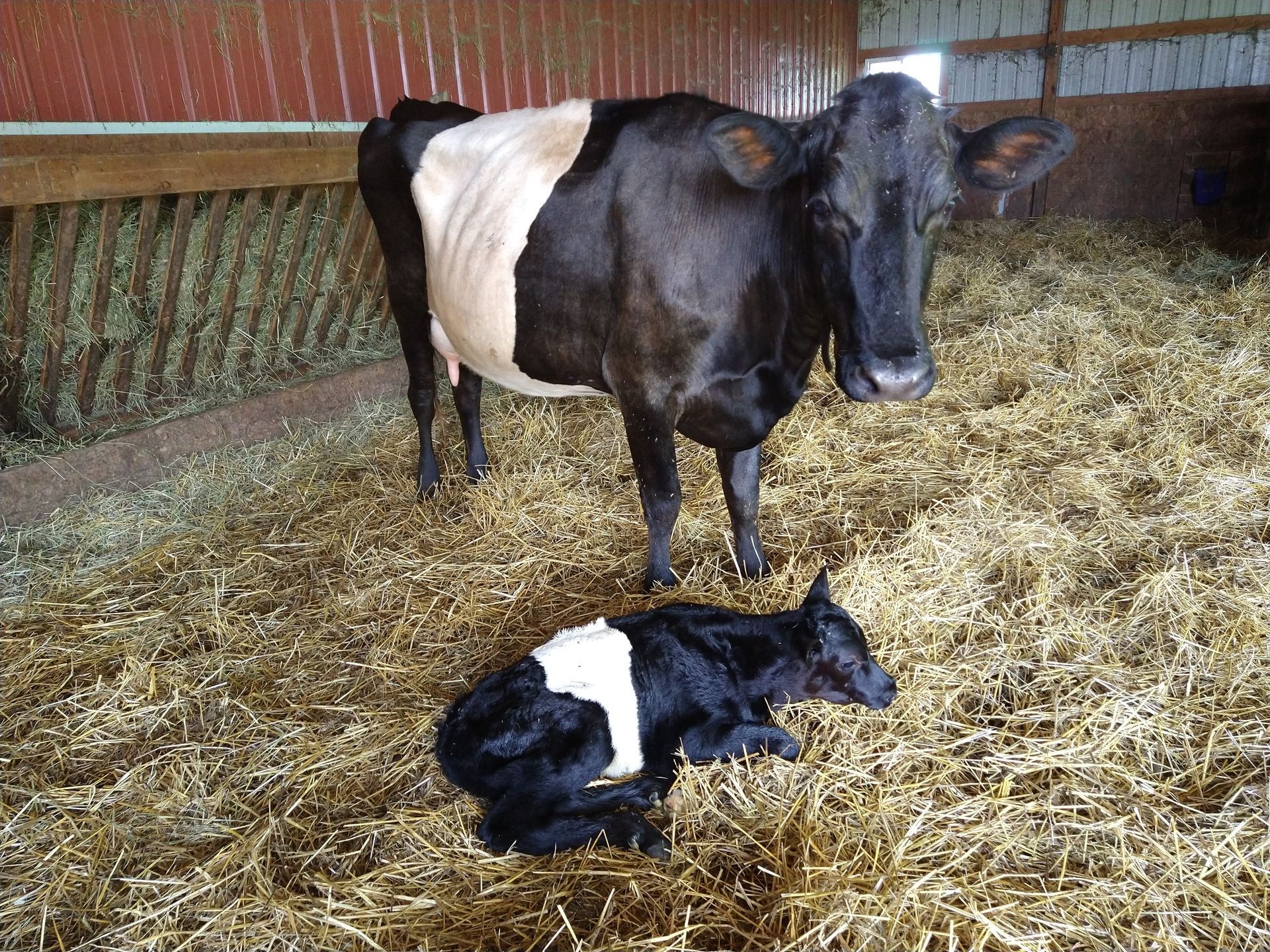
Mixing pleasure with profits:
Our farming neighbors have accused us of spoiling our cows but perhaps that's more than okay if "spoiling" means truly enjoying them. Yes, we do have the calves stay with their moms until the natural weaning age of nine months, but our busy homestead makes that easier for us to manage everything. It also means we've never had a sick calf. At nine months of age the steers have to go to the butchers to become "grass-fed, milk-fed, baby beef." The heifers are separated from their moms for a couple of weeks or more until weaned.
The cows give us so much in addition to milk and meat. They certainly make this little homestead more “productive” and “sustainable.” The meadow has thrived from continually drilling in more varieties of forbs and grasses. The cows’ grazing, pooping, and lightly tilling the soil has made a remarkable improvement in the forage and soil. Their compost seems essential for our garden. We’ve learned to grow and bale good hay while keeping the herd small enough to feed even during drought years.
We’ve also met interesting people and made money when selling calves. And of course, our diet has been greatly enhanced with the milk and meat that they provide. I guess we could say that cows provide a challenging learning curve while improving both our health and the health of the farm.
